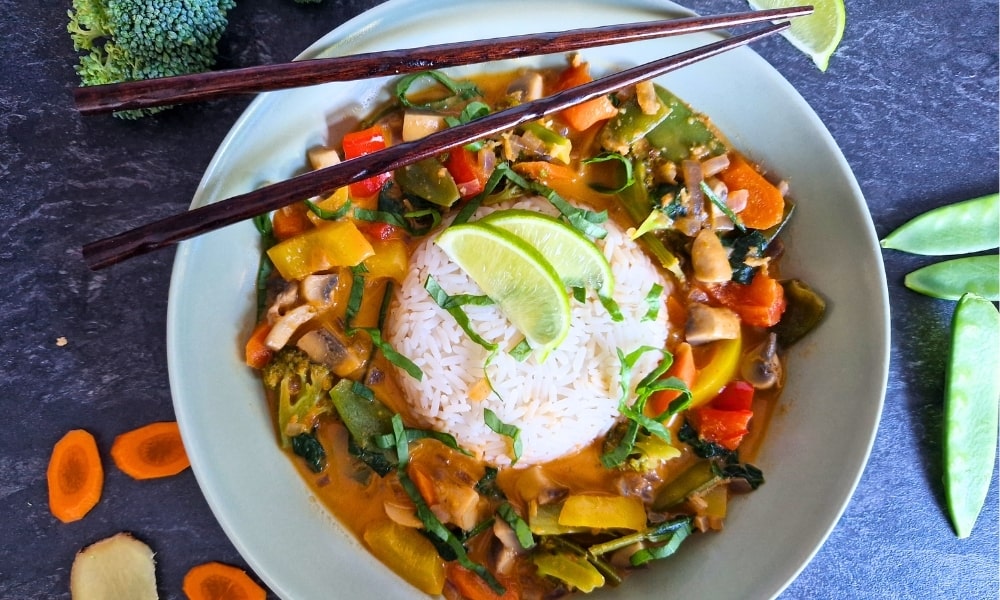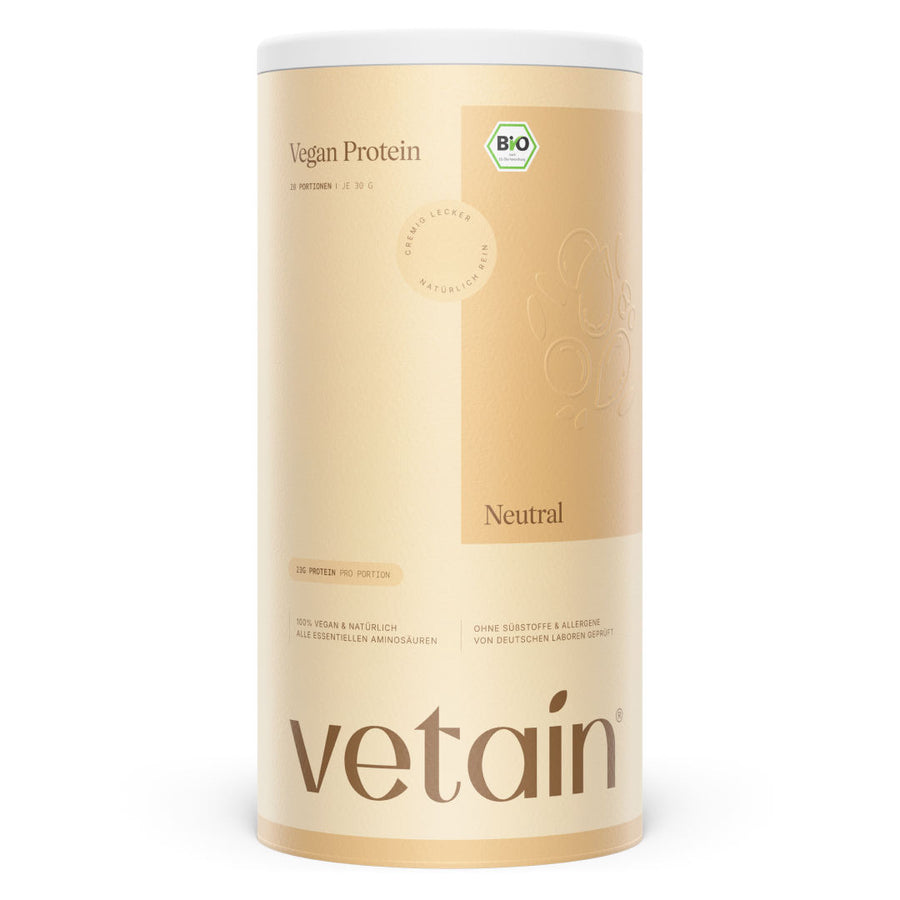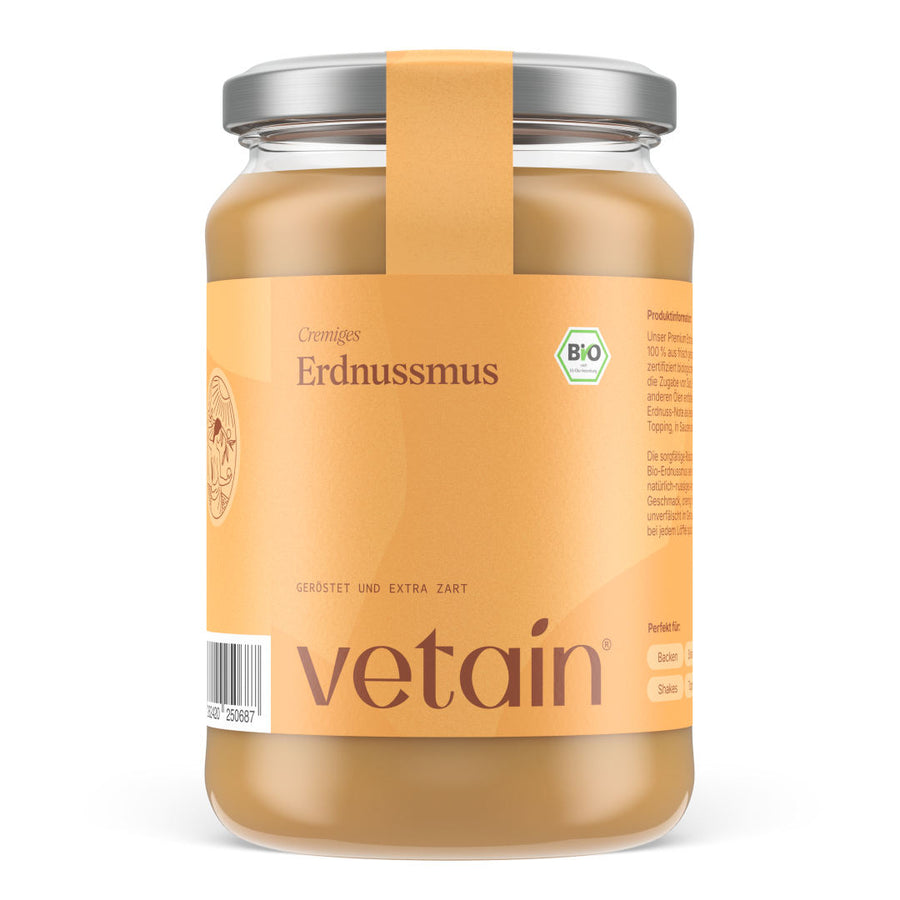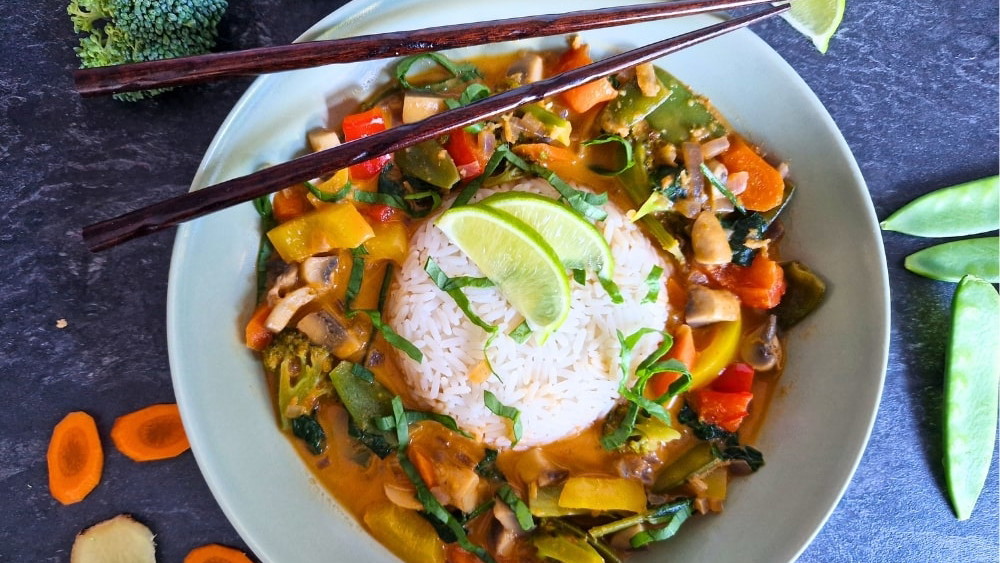Crisp vegetables, a creamy sauce, and a hint of spice – craving an authentic red Thai curry in a vegan version?
Nutritional values per serving
Instructions
Serve the vegan Thai curry in bowls or on plates, add rice, and decorate with toppings of your choice.
Recipe Note
A vegan curry with coconut milk is always a winner – whether as a fresh summer version with lots of vegetables or as a fiery, warming dish in autumn or winter. This Thai vegetable curry recipe is perfect all year round.
Thai Curry | Ingredients
The ingredients make the curry special – whether it’s vegan or not. The star of the curry is clearly the curry paste.
What is curry paste actually? Curry paste is a spice paste made of many aromatic ingredients and chili. You can buy it ready-made or make it yourself – instructions below.
But the coconut milk also makes the curry what it is: an intense, creamy dish without any dairy.
The great thing about our vegan Thai curry recipe is that you can decide for yourself what goes into your curry and how it will taste:
- How much spice do you like?
Not at all → yellow curry paste for a mild yellow Thai curry
A little → red curry paste for a savory, slightly spicy red Thai curry
A lot → green curry paste for a hot green Thai curry - Which vegetables do you like?
Add your favorite vegetables. There are no limits – any vegetable can be curry vegetable! You can also choose based on seasonality and regionality. - Pick your side dish:
Traditionally served with rice, but you can also try couscous, bread, or potatoes. - Do you want a vegan curry, a vegetarian curry, or with chicken?
Adapt your ingredients accordingly. Thai curry with tofu is a popular vegan choice. - Sauce lover?
Just make more Thai curry sauce – you’re the boss! - Want to boost the protein in your vegan Thai curry?
Just mix in a bit of neutral protein powder. It makes the sauce creamier and ups the protein content of your meal.
Our tip: Vetain’s vegan protein powder!
Red Curry Paste for Your Vegan Thai Curry
Red curry paste gives your vegan Thai curry its flavor and color. You can easily buy it at an Asian store or most supermarkets. Or, you can make it yourself with some special ingredients – preparation is easy:
Ingredients for 1 jar (about 200 ml):
- 2 tsp coriander seeds
- 1 tsp cumin seeds
- 4 garlic cloves
- 2 shallots
- 2 tbsp fresh ginger
- 1 stalk lemongrass (white part only)
- 4 dried soaked red chilies or 3 fresh red chilies
- 2 tbsp neutral oil (e.g. rapeseed oil)
- 2 tsp paprika powder (sweet or hot)
- 2 tsp soy sauce
- zest of 1 organic lime or a few kaffir lime leaves
- ½ tsp black peppercorns
- 1 tsp salt
Preparation:
- Toast coriander and cumin seeds briefly in a dry pan until fragrant. Grind them finely in a mortar or blender.
- Roughly chop shallots, garlic, ginger, and lemongrass.
- Blend all ingredients into a fine paste. Add a little oil or water if too dry.
Your homemade curry paste is ready. Store in a sterilized jar in the fridge or freeze in portions.
Thai Recipes
Red Thai curry is a classic of Thai cuisine, traditionally called Kaeng Phet – literally “spicy soup.”
Thai curries probably originated in the 17th century and are still an essential part of Thai food culture. Just as pasta with tomato sauce or potato salad is common at home here, Thai curry is a popular family dish in Thailand. It spread to Germany in the 1980s, and today it’s so well known and loved that many cook it at home.
Though the original is often made with meat or fish, there’s a delicious vegan option: vegetable curry. Without meat, but just as tasty. Today we’re making the vegan version of this traditional Thai curry.
Try this vegan Thai curry and get inspired.
Making Thai Curry at Home
A red Thai curry with coconut milk may sound challenging, especially if you’re new to Asian cooking. But this vegan Thai curry is the perfect entry point: the curry paste does all the seasoning for you. All you have to decide is: do you want it spicy or mild?
Let’s cook a delicious curry together!
Substitution Table
How often do we want to cook a recipe but are missing ingredients or don’t like certain ones? Here’s a substitution table so you can adapt our red curry recipe to your taste:
- Onion → spring onion
- Garlic → dried garlic
- Grated ginger → dried ginger
- Red curry paste → other curry pastes or homemade
- Rapeseed oil → coconut oil or other fats
- Vegetable broth → water
- Vegetables of your choice → literally any vegetable
- Lime juice → lemon juice
- Tofu → other proteins like tempeh, neutral protein powder, non-vegan alternatives, or omit
- Coconut blossom sugar → omit or use another sweetener
- Kaffir lime leaves → omit
Our Thai curry is vegan, but you can use animal products if you prefer!
FAQ
Is vegan Thai curry hard to cook?
No! This recipe is the perfect choice if you’re looking for something simple. Vegetable curry can be easy too.
Is the Thai curry sauce very spicy?
You can adjust the spice level by changing the amount of curry paste, ginger, and garlic. Since the curry is cooked with coconut milk, the sauce absorbs a lot of the heat, making it milder. From “kid-friendly” to “help, I need a glass of oat milk,” everything is possible.
Is this Thai curry recipe authentic?
With this recipe, you can make a vegan version of the classic that feels like being at your favorite Thai restaurant or even in Thailand itself.





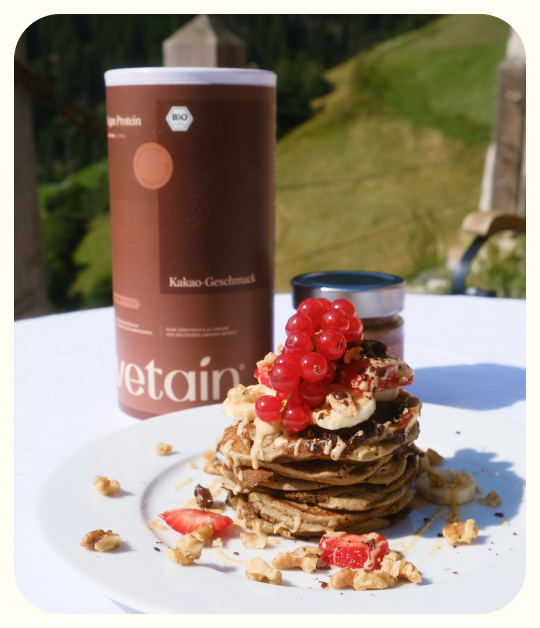
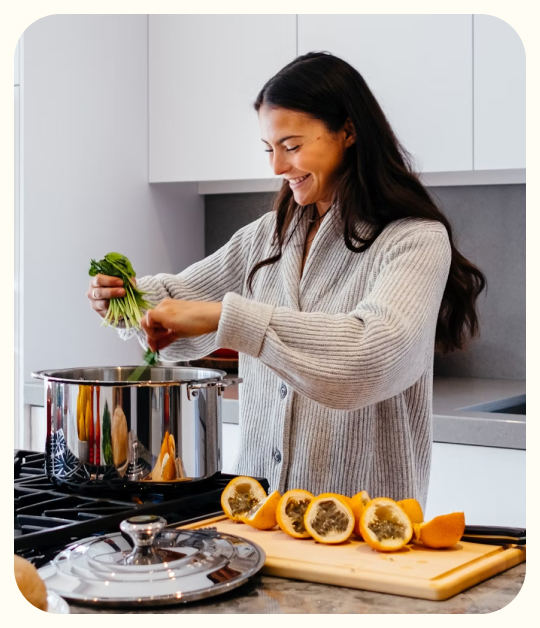

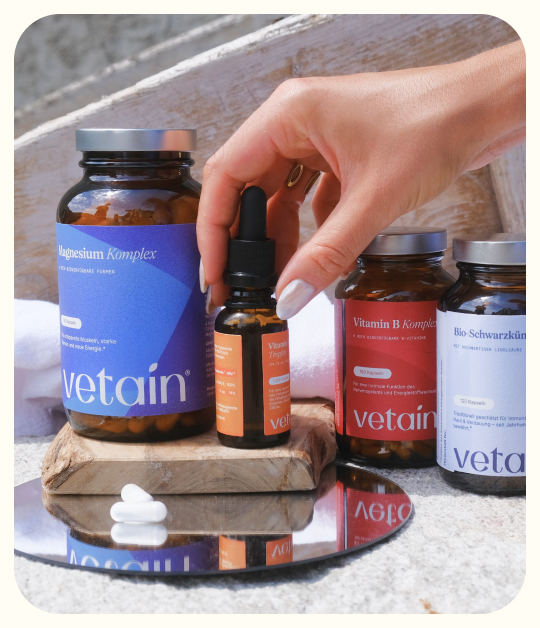





 20 Minuten
20 Minuten
 15 Minuten
15 Minuten
